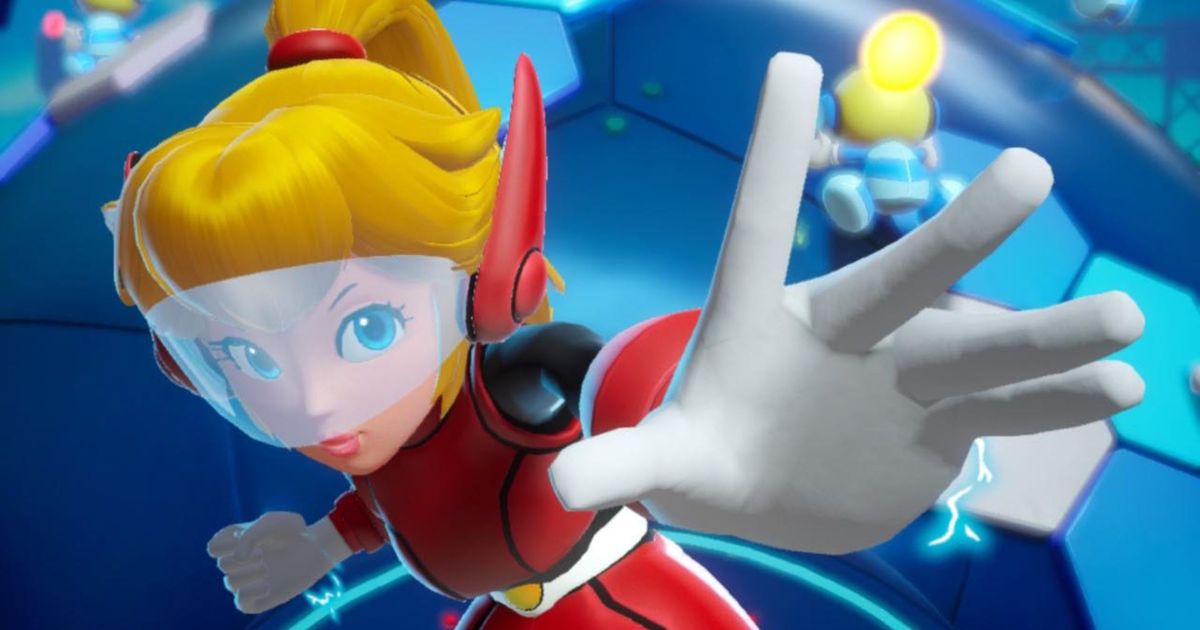With AAA games focusing more on grandiose open-worlds and expensive graphics these days, something smaller like Princess Peach: Showtime feels remarkably refreshing. A combination of simple, yet varied gameplay, innovative levels, and charming visuals makes this newfound Switch exclusive a game that fans definitely shouldn’t sleep on.
Princess Peach: Showtime graduates from the Mario school of storytelling, as the plot is only there for gameplay purposes. Similar to games like Super Mario Wonder, the narrative here is set-dressing for your adventure, nothing more.
One day, Peach and her Toads were invited to watch a variety of shows in the Sparkle Theater before being interrupted by the villainous Grape and her Sour Bunch. Grape captures Peach’s Toads and the theater’s residents, so it’s up to the Mushroom Kingdom’s princess to stop the villain. This time, it’s not Peach in need of rescuing, but her little mushroom fellows instead.
It’s not much of a plot, but they’ve never been the main focus of these Mario games. The story is just there to give Peach an excuse to be a sword fighter, cowgirl, chef, ninja, mermaid, superhero, and more as she battles her way through various themed venues to rescue her friends. Each stage has Peach taking up one of these roles, as she collects enough Sparkle Gems to beat the Sour Bunch and, eventually, Grape herself. Peach is also accompanied by Stella, who gives her a sparkly spin that can be used to attack foes in her base form and motivate the various NPCs.
Controlling each transformation in Princess Peach: Showtime is simple, as players only need to rely on one button to jump, another to use the transformation’s ability, and the last one to find secret areas. It’s a very simple control method that can allow for single joy-con play, so we applaud Nintendo for thinking of that, even as the Switch nears its rumoured end.
Despite the simple controls, Princess Peach Showtime gameplay is never boring thanks to excellent level design that makes the most out of each transformation’s ability and the linear stages. Cowgirl Peach is a good example of this, as her ability to catch and throw enemies or items initially seems boring. However, further levels spice things up with various exciting set-pieces, like having her fight on top of moving trains or chasing baddies with her trusty horse.
Variety is where Princess Peach: Showtime truly shines. Ninja Peach can take out foes stealthily in one minute and take part in auto-running sequences the next. Mermaid Peach can control fish with her singing, just like Aquaman. Mighty Peach can lift alien spaceships and throw them at enemies. Even with simple controls, the game always creates new scenarios to spice things up.
Each transformation only has three stages, which is a mixed bag. This reinforces the game’s fast-paced nature, but it also leads to a short experience. At the least, players are never stuck with one transformation for too long, but I would have liked more Sword or Ninja levels.
Speaking of the game’s bosses, these are very interesting since Peach doesn’t use her various transformations to fight them. Instead, Peach is in her base form as she tries to guess the pattern for each of the Sour Bunch. These are also very fun, as they can range from typical platformer bosses to a mind-blowing clone of the Scarecrow fight from Batman: Arkham Asylum, albeit with a giant snake. No, really.
Collectibles in Princess Peach: Showtime borrow a lot from the modern Mario games. Each level has players collect several Sparkle Gems. Sparkle Gems are given to the player by simply playing through each stage, though some are hidden and require minor exploration. These are needed to fight the bosses, but players should have more than enough just to beat the game regularly. You can also replay levels once you’ve beaten them, for those 100% completionists out there.
There isn’t a lot to complain about with the simple gameplay, but the presentation needs some work. Visually, this game is gorgeous, with bright colors and good lighting that helps each stage stand out. I played this on a Nintendo Switch OLED and it made the game’s colors pop even more, although characters looked substantially blurrier in handheld mode. However, it does still look great.
Loading times can take a while, taking up to 20 or 30 seconds when starting a stage. Some loading screens also take a dip in the frame rate, which can be distracting. None of these issues ever affected the gameplay, though they are still worth pointing out since most first-party Switch titles hide the hardware’s weaknesses.
One less understandable aspect is the fact Princess Peach: Showdown doesn’t give players multiple save files. Those who finish the game and want to replay it for fun will have to delete their save or start from a different account. Unfortunately, this is a common issue with Switch exclusives in general, as Super Mario Bros. Wonder did the same thing. Sure, you could make a new profile on your Switch to play again, but this is a huge pain for a game that should be very replayable.
A few glaring issues aside, Princess Peach: Showtime is still a great game filled with Nintendo charm that Switch owners shouldn’t sleep on. This shows how smaller games can stack up to triple-A titles with a varied gameplay loop and well-designed levels.
Reviewed on Nintendo Switch with code provided by Nintendo.

Explore new topics and discover content that's right for you!







